Contents
Asana vs. Trello: Detailed Comparison (Features, Pricing)
By Shyamal ParikhSep 21, 2024

Project management tools are a dime a dozen, but Asana and Trello? They stand out from the crowd.
One's all about simplicity, with its drag-and-drop interface. The other? Robust workflows and intricate task dependencies. Both promise to streamline your projects, but which delivers?
Your team's success hinges on making the right decision. Do you need visual clarity or comprehensive task management? Is user-friendliness your priority, or do you need a feature-rich powerhouse?
And let's not sidestep the elephant in the room - pricing. Which tool offers better value for your money?
In this Asana vs. Trello comparison, we'll explore both tools' key features, pricing models, and overall value to help you decide the right fit for your team.
Fast Facts: Asana vs Trello in 2025
Asana - Work Management Designed for Scale
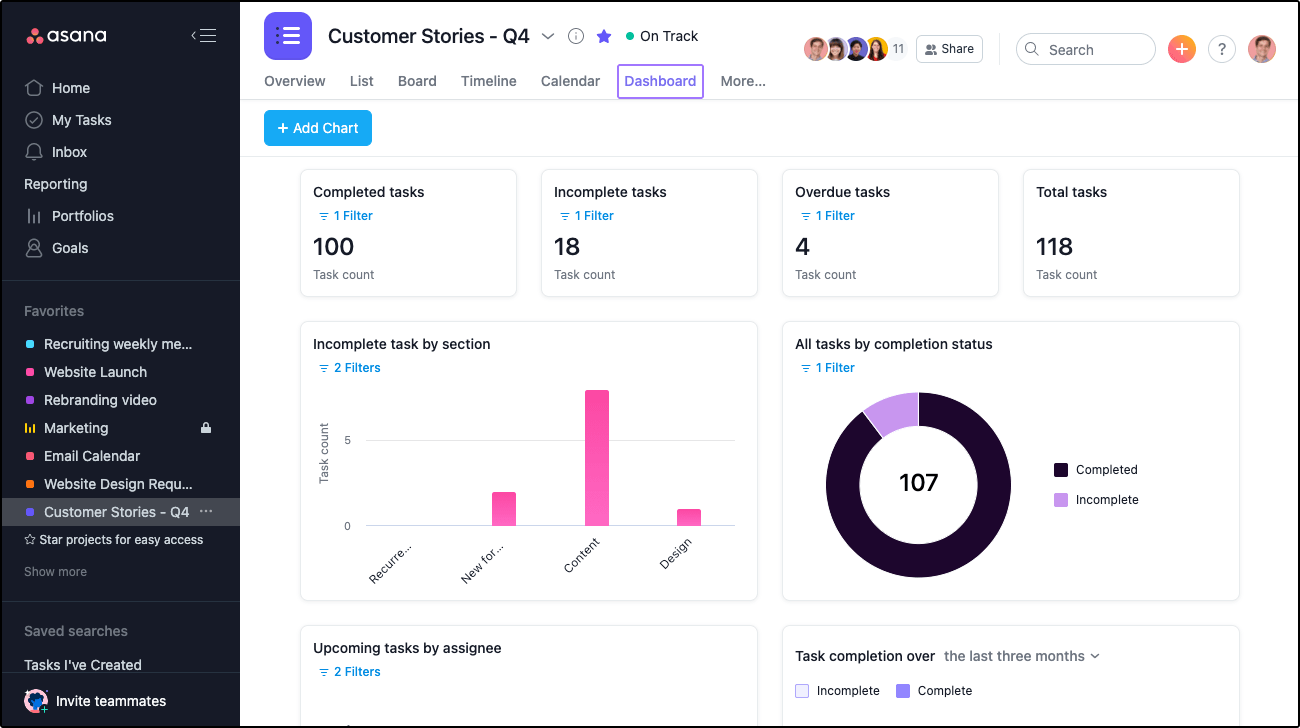
Asana helps teams align goals, streamline workflows, and automate routine tasks. Created by Facebook co-founder Dustin Moskovitz and ex-Googler Justin Rosenstein, Asana primarily caters to mid and large-sized enterprises that need robust project management and collaboration tools.
Key Features
- Tasks, subtasks, and dependencies
- List, calendar, timeline, Kanban board, and Gantt chart views
- Custom fields for labeling and filtering information
- Workflow automation
- Goal tracking, portfolios, and reporting dashboards
- Asana AI for querying databases and assigning work
What Users Say About Asana?
At the time of writing, Asana had 35k+ reviews on G2 and Capterra, with an average rating of 4.5 and stellar reviews for its task management features.
Users like Asana because it enables them to manage people across multiple teams and track their performance and goals.

However, it doesn't let you assign tasks to multiple people, so you have to create the same task more than once. It also doesn't have a built-in chat feature, so you'll need to rely on third-party apps for communication.

Why Consider Asana Over Trello?
- Comprehensive task management with subtasks, dependencies, and custom fields
- Flexibility to switch between list, timeline, calendar, Kanban board, or Gantt Chart views
- Real-time reporting tools tracking project progress, tasks, and deadlines
- Workload view for basic resource management
Trello - Kanban Project Management Simplified
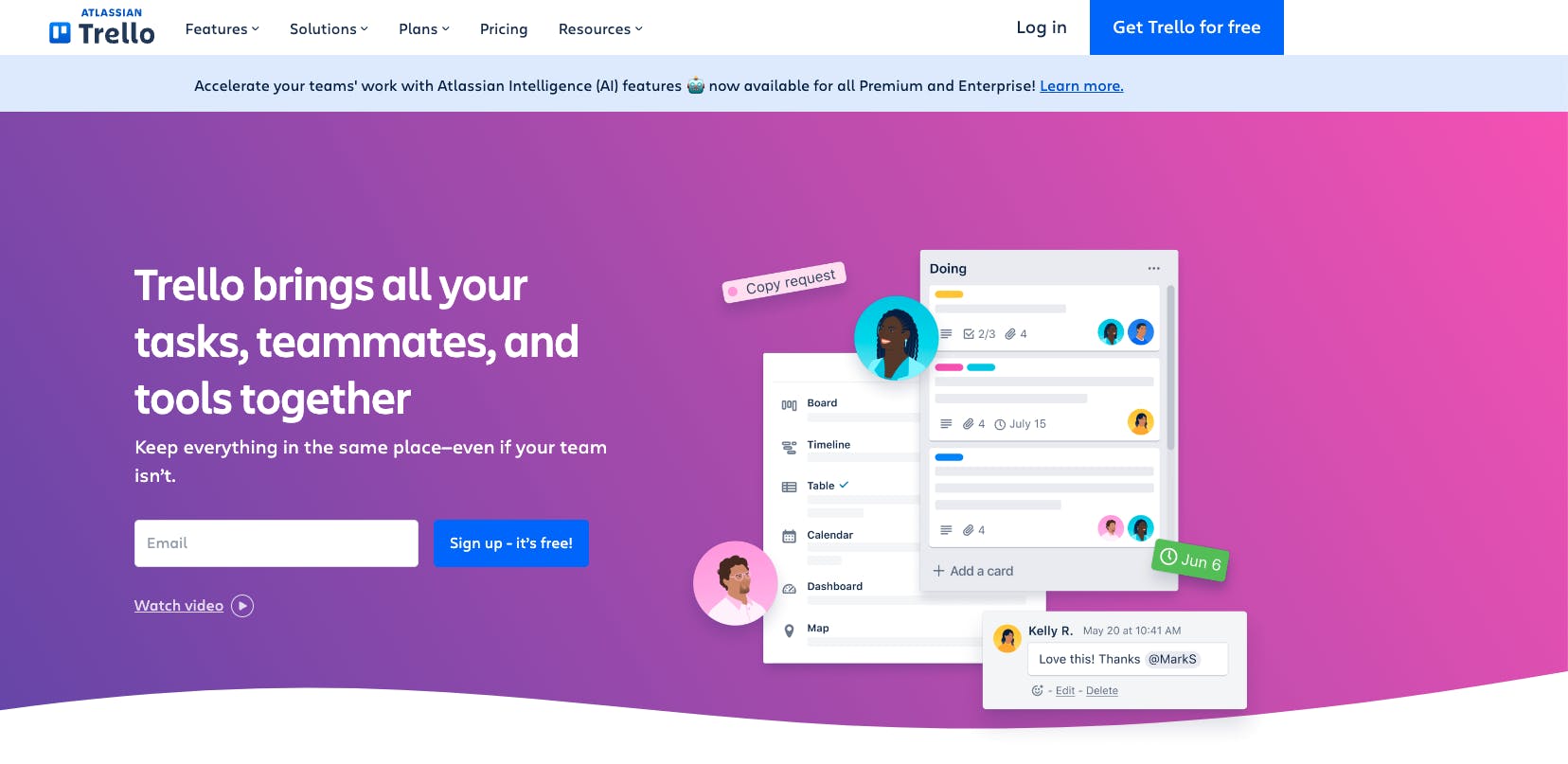
Trello is known for its simplicity and intuitive Kanban boards. It's also part of the Atlassian suite and offers seamless integration with tools like Jira and Confluence.
Key Features
- Kanban boards for visualizing work
- Lists for splitting projects into manageable stages
- Cards (or tasks) with checklists, due dates, and attachments
- Power-Ups (or integrations)
- Workflow automation
- Comments and tags for collaboration
- Custom fields for adding specific data to cards
What Users Say About Trello?
At the time of writing, Trello had 36k+ reviews on G2 and Capterra, with an average rating of 4.4. It received stellar reviews for its ease of use, project management, and team collaboration features.
Users like Trello’s customizable boards and color-coded labels for easy organization. They also appreciate the ability to drag and drop cards across different lists.

However, Trello users have reported difficulties finding cards on bigger boards or projects. They also lament the lack of built-in analytics, which necessitates the use of third-party apps.

Why Consider Trello Over Asana?
- Intuitive and easy-to-navigate user interface
- Adapts well to various types of projects, teams, and workflows
- Butler AI for workflow automation
- Generous free version
Feature Face-Off: How Asana and Trello Compare
Let’s compare Asana and Trello across key categories such as user experience, task management, time tracking, reporting, collaboration, customer support, and pricing.
User Experience
If you’ve used a project management tool before, Asana’s interface will feel familiar and easy to navigate. However, the same can’t be said for newcomers, who might have to endure a steep learning before unlocking its potential.
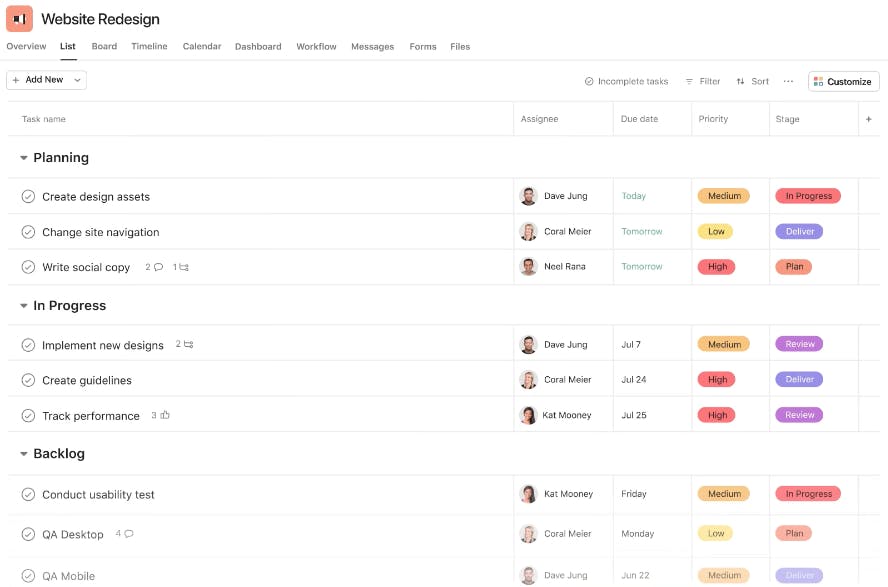
Trello, on the other hand, is very user-friendly, thanks to its simple layout and the Kanban view, which is the only view available to users on the free plan.
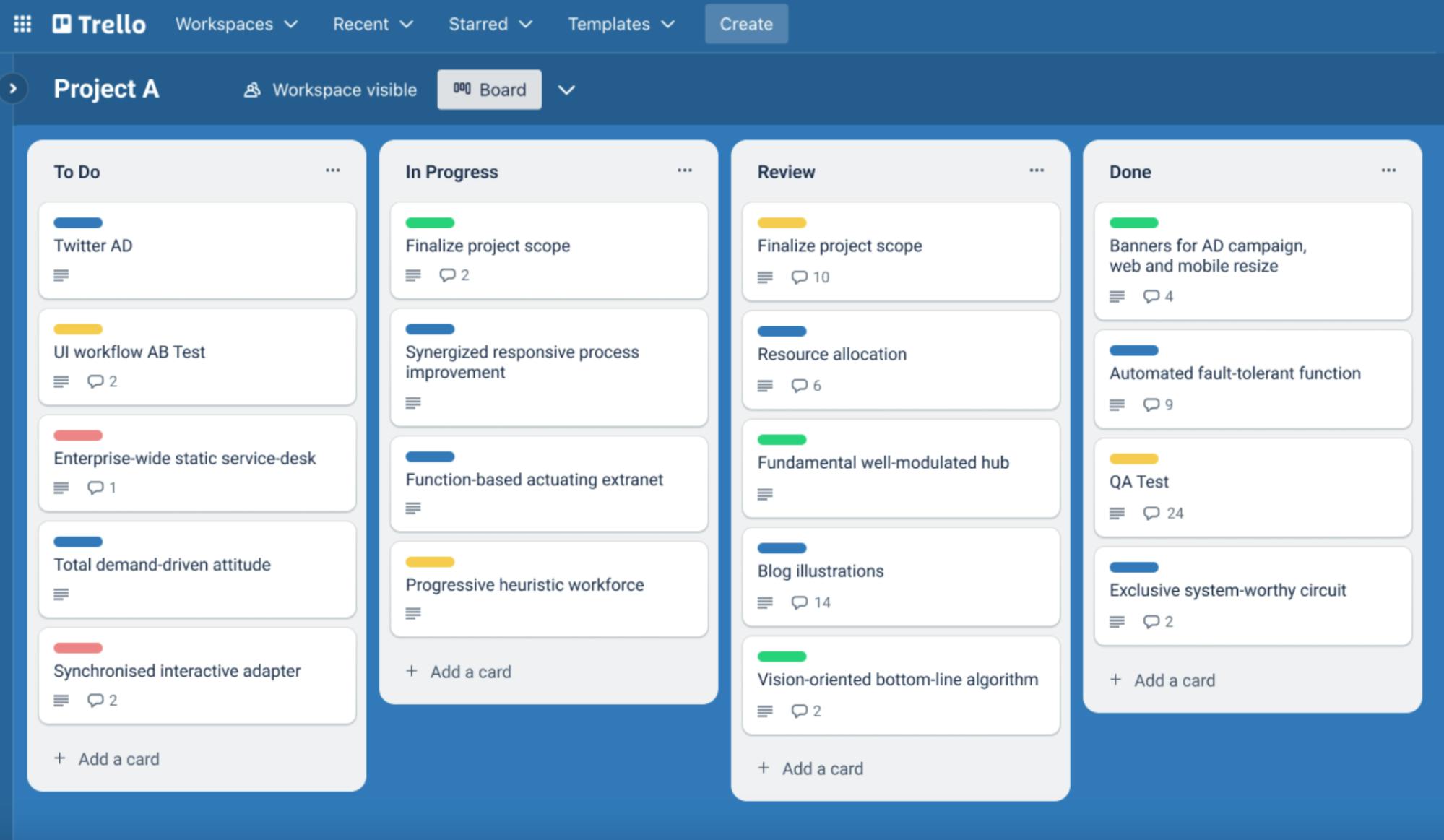
Task Management
Asana offers robust task management with tasks, subtasks, and dependencies to structure your work effectively. It also allows you to filter and sort tasks using custom fields, assign priorities and manage deadlines with due dates.
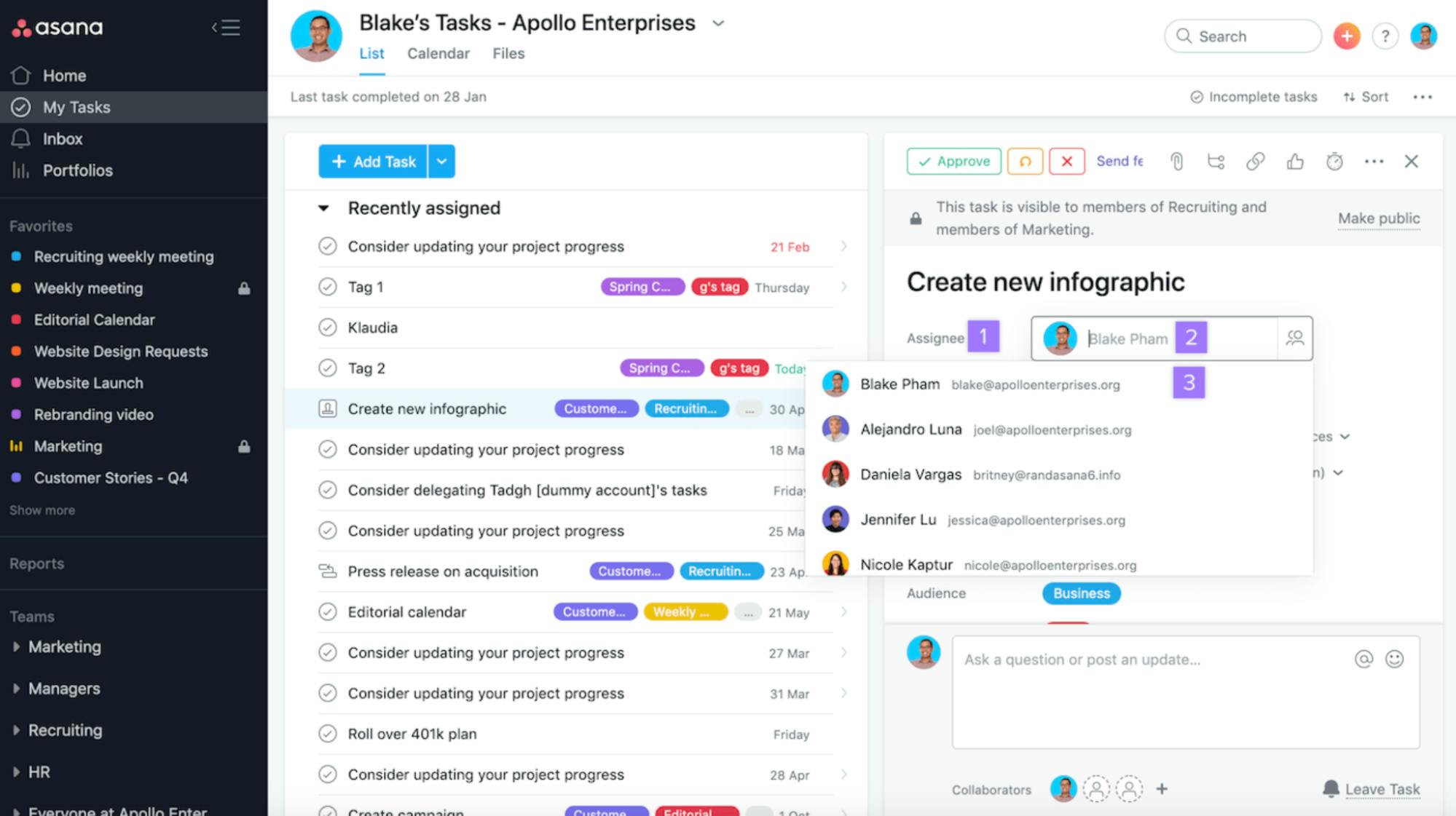
In Trello, you can't link tasks to subtasks, create roadmaps, or review iterations. It also doesn't support dependencies or automatically adjust timelines in case of delay.
Managing multiple tasks can also be overwhelming, as there’s no unified timeline across boards -- which increases the risk of missed deadlines.
Overall, Trello isn't a good choice for advanced project management.
P.S.: See how Asana and Trello compare to the best task management tools
Time Tracking and Resource Management
Asana offers a basic time tracker that helps you budget your workload and monitor how much time is spent on each task. It also has a workload management feature that helps you balance team capacity and optimize resource allocation.
Trello may not be the best fit if your project requires time tracking or necessitates resource management, as it doesn't have these features. For this, you'll have to look into third-party integrations -- which will inflate your expenses.
P.S.: See how Asana and Trello compare to the top resource management tools
Reporting and Analytics
Asana offers basic reporting features like task tracking, project timelines, and data visualizations. However, for advanced reporting and analytics, users must look into third-party apps.
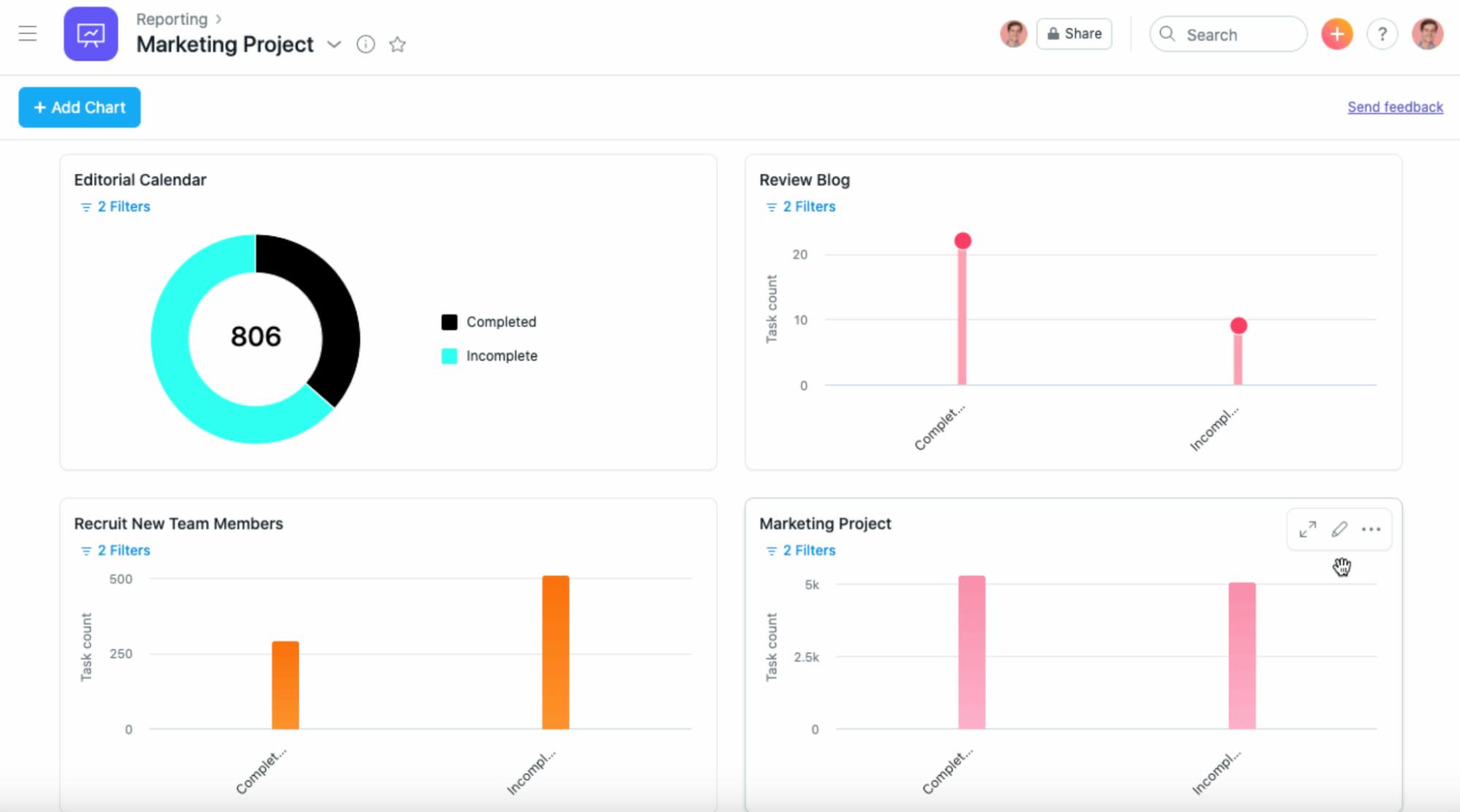
Trello doesn't have built-in reporting tools, which means you'll need to lean on Power-Ups (or integrations) like Screenful, Timecamp, or Blue Cat to monitor project progress.
Collaboration
Asana doesn't have a built-in instant messaging feature. However, it offers task comments and messages and integrates with apps like Slack and Confluence to fill this gap.
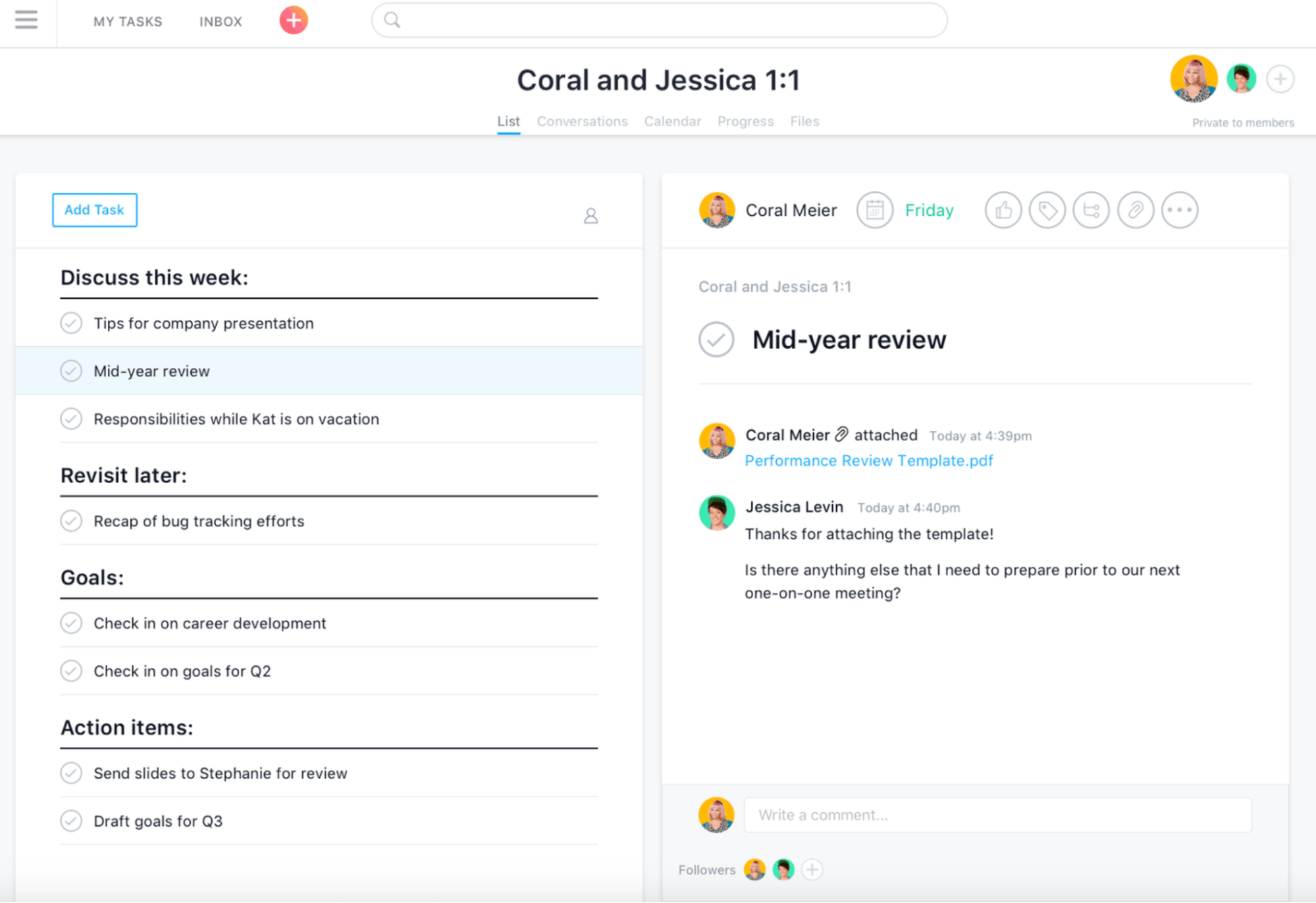
Trello also lacks built-in chat but offers a powerful Slack integration. This allows users to paste Slack links into Trello and view key details like assignees, task descriptions, and comments without leaving the app.
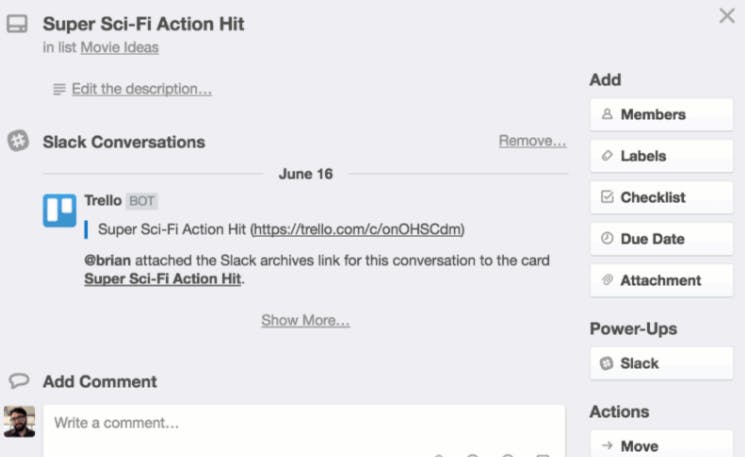
P.S.: Looking for robust collaboration tools? Check out this list of top communication tools.
Customer Support
Asana's customer support quality varies by subscription level. Higher-paying users generally receive better service compared to free and lower-tier users.
Trello, in contrast, doesn’t provide support to free users, who must rely on community forums for assistance. For 24/7 support, you need to be a Premium or Enterprise user, though Premium users only receive support during business days.
Pricing
Between Asana and Trello, Asana is the pricier option, with its basic plan starting at $10.99. However, it comes with more features, such as additional project views, enhanced user controls, and automations for complex workflows.
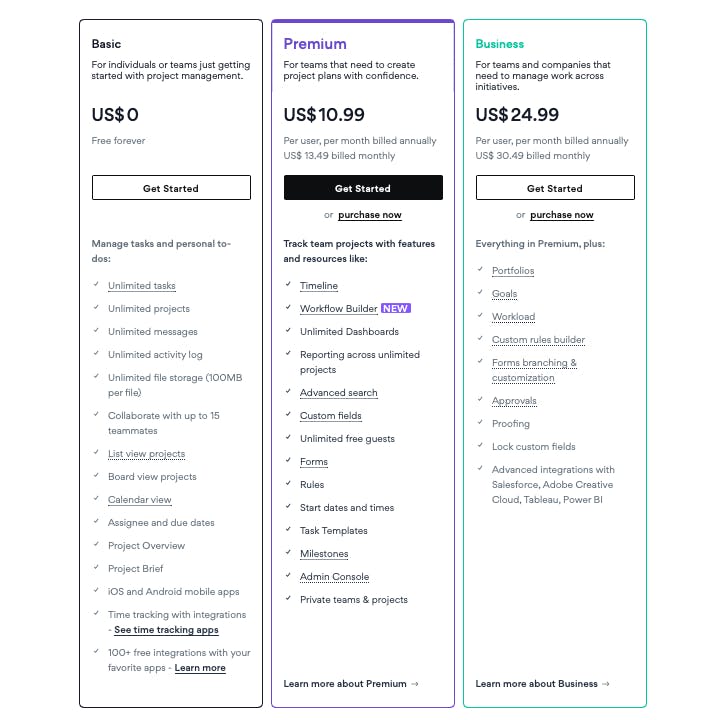
Trello, on the other hand, offers a Kanban view and some basic features in its free tier but lacks tools like Gantt charts, task dependencies, analytics, and workload view.
Advanced features, including user controls, permissions, and Atlassian Intelligence (AI), are available only in the Premium and Enterprise tiers, with the Enterprise plan requiring at least 50 users.
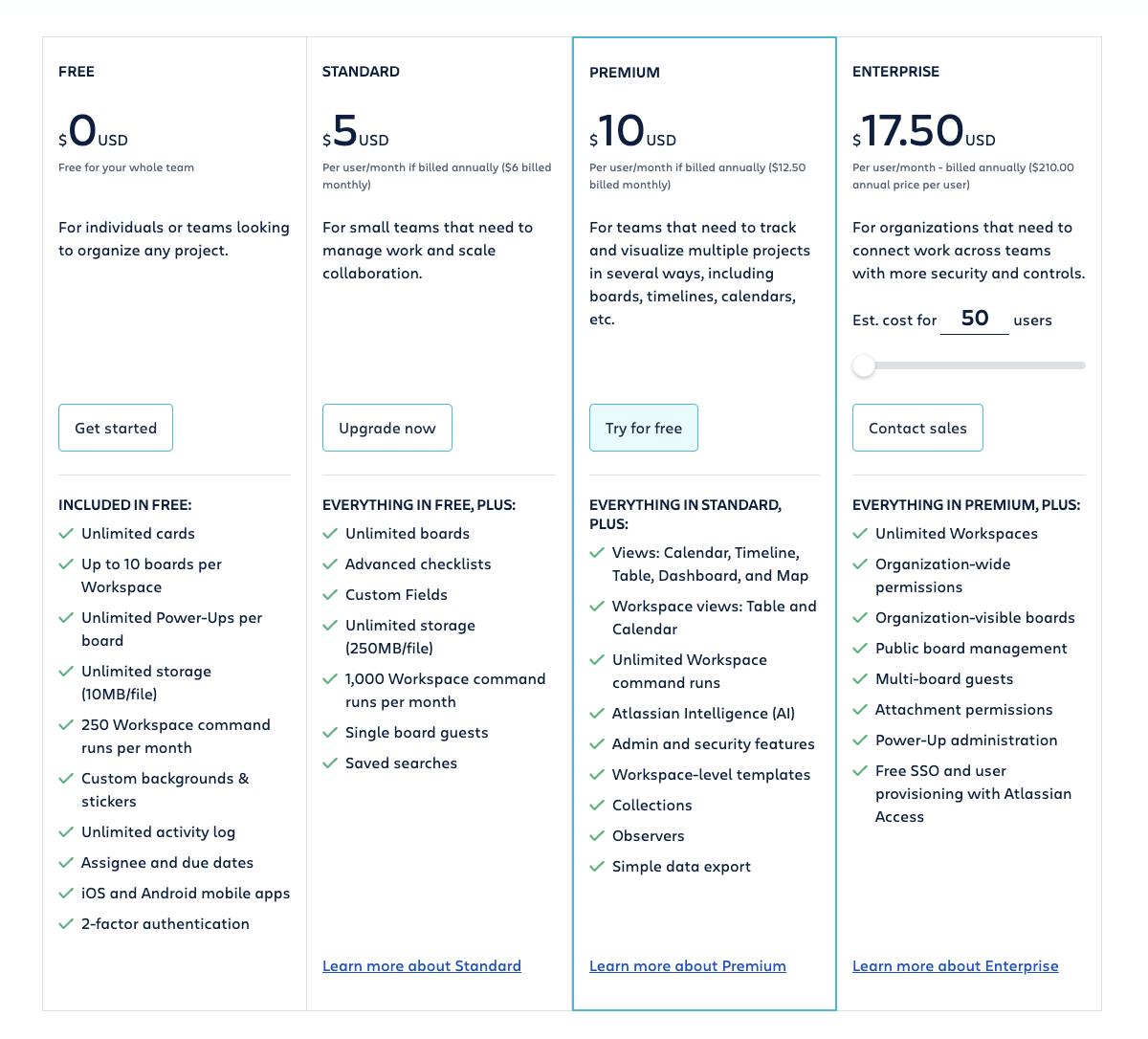
SmartTask: A More Comprehensive Alternative to Asana and Trello
While Asana and Trello are great for day-to-day tasks, they also have significant limitations. Both lack robust time-tracking, built-in chat, and resource management tools and require costly third-party integrations for communication, project cost estimation, and reporting features.
SmartTask addresses these limitations by offering native time tracking, advanced resource management, CRM, and built-in communication tools.
It also offers robust project management features with budget and sales forecasting capabilities, making it especially well-suited for professional services firms, like agencies and consultancies.
Let’s take a closer look at its features:
a) Trello's task management is basic, and Asana limits task assignment to one person. In contrast, SmartTask offers multiple project views, infinite subtasks and dependencies, and the ability to assign a task to as many teammates as you want.

b) SmartTask provides detailed reporting and analytics that go beyond Asana's basic tools. It offers comprehensive project summaries, custom reports, and data visualizations, delivering in-depth insights into project progress and team performance.
c) SmartTask offers a built-in time tracker with daily and weekly activity logs. It also allows you to set task-level time estimates and billable hours for tracking project costs.
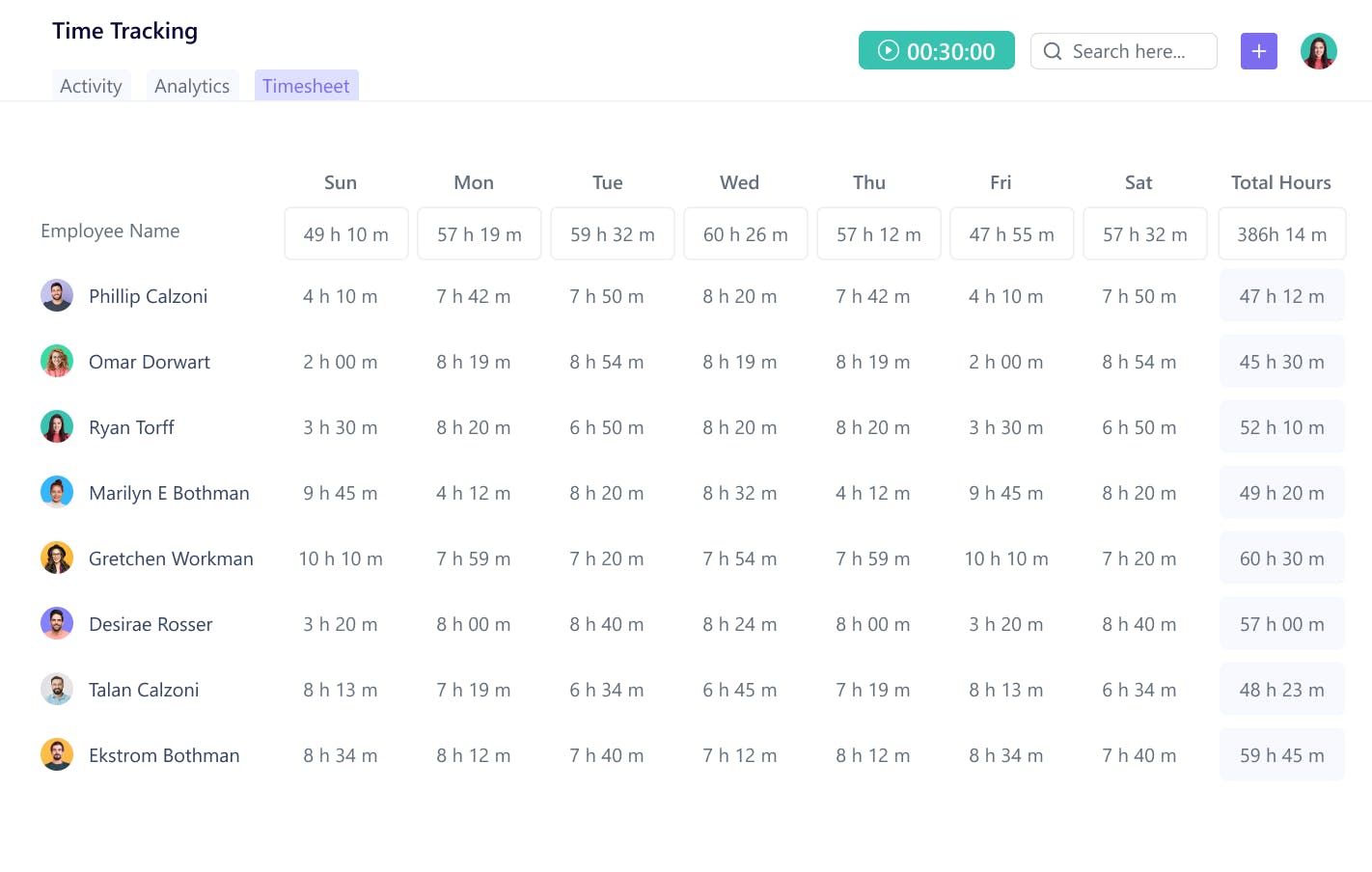
d) SmartTask's advanced resource management surpasses Asana and Trello, offering real-time insights into team capacity and availability to prevent under and over-utilization of resources.
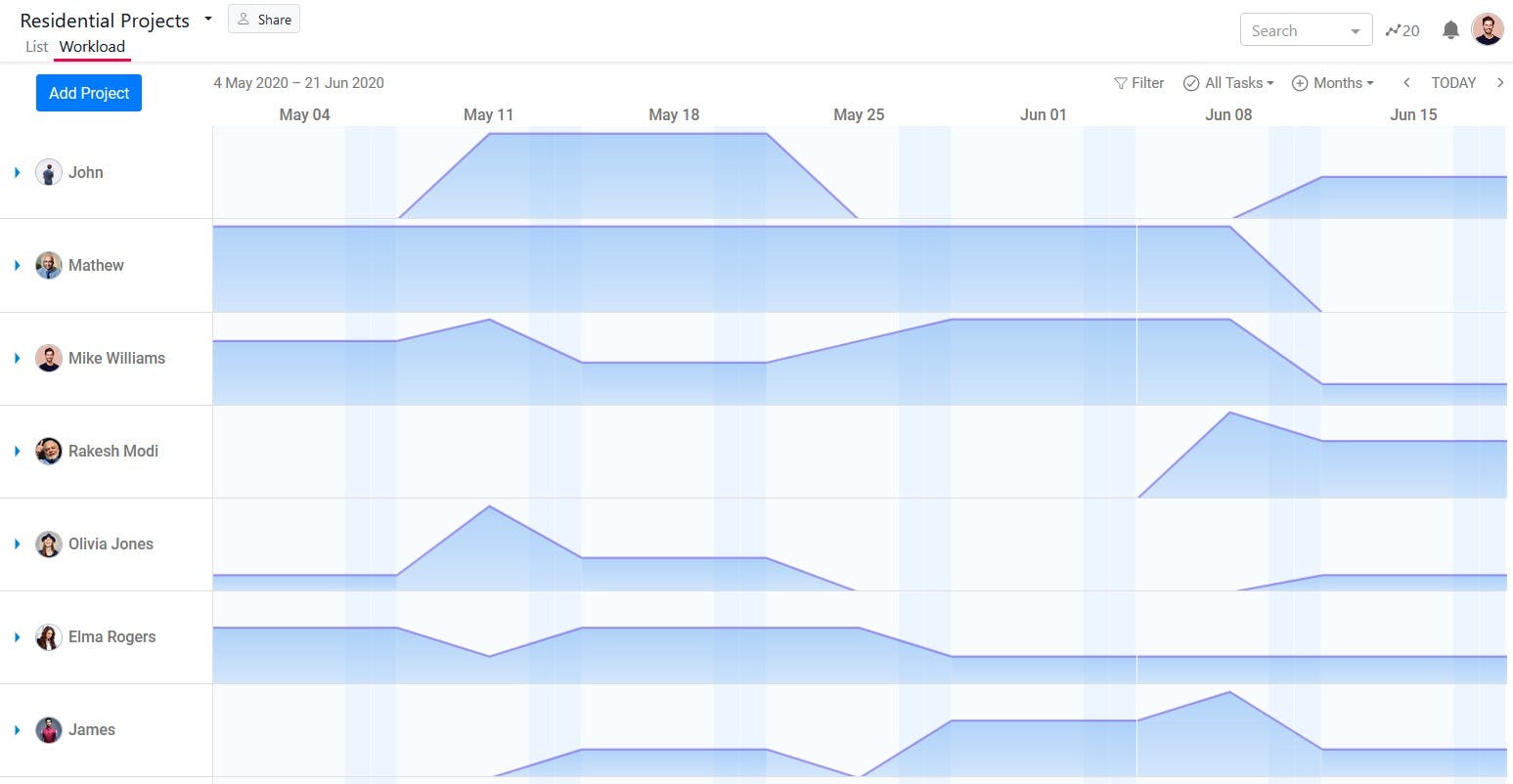
e) SmartTask features a built-in chat function, project feed, and video calling, facilitating seamless team communication without the need for external tools.
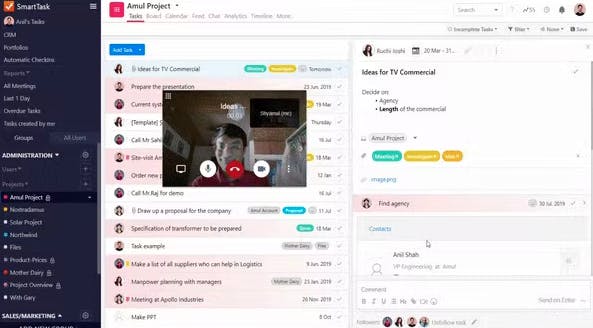
f) SmartTask includes a built-in CRM that lets you track inquiries through your sales funnel, forecast revenue, monitor team performance, and record customer calls for training and analysis
In terms of pricing, SmartTask is highly competitive, offering a Free Forever plan that includes key features like task management, timeline view, custom fields, charts, and built-in chat.
For advanced needs, you can look into premium plans, starting at $7.99 per month, and including features like portfolios, milestones, project cost estimation, resource management, and CRM tools.
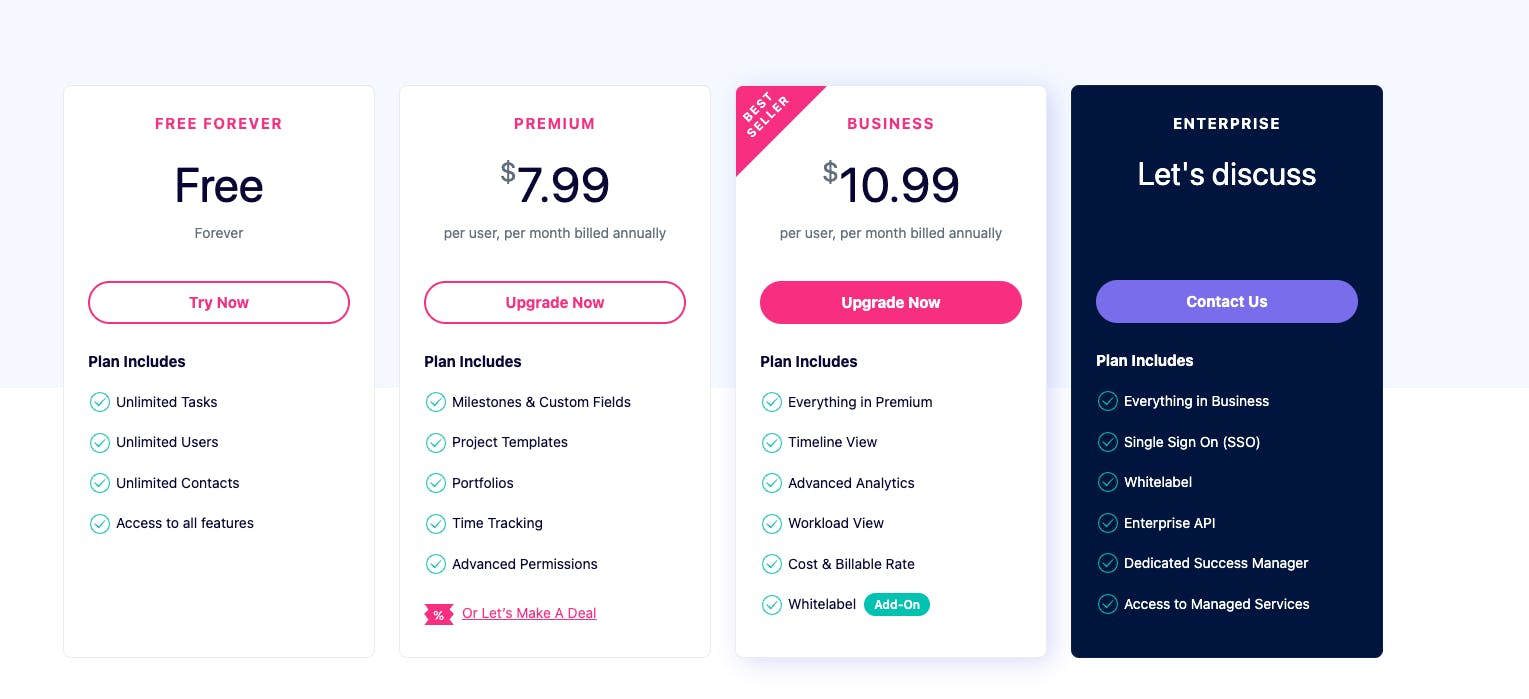
Which Tool Wins In 2025?
For project management, both Asana and Trello offer distinct strengths.
Asana stands out for its workflow automation, making it ideal for teams handling complex projects.
Trello shines in its visual simplicity and user-friendly Kanban boards, which are perfect for straightforward projects.
But if you’re looking for a tool that covers more comprehensive project needs, SmartTask goes further. With detailed time tracking, advanced reporting, and a built-in CRM, it's particularly well-suited for managing projects and client relationships.
To experience project management, budgeting, and client management under one roof, start a risk-free unlimited trial today–SmartTask is free!
Frequently Asked Questions (FAQs)
1. Which tool offers a better mobile experience: Asana or Trello
When it comes to the mobile experience, Trello leads with its user-friendly app that mimics the functionality of its desktop version and simplifies project and workflow management on the go. Asana also offers a mobile app, but it's not as robust and user-friendly.
2. Can you integrate Asana with Trello?
Yes, you can integrate Asana with Trello using third-party tools like Unito. These integrations allow you to sync cards, tasks, projects, boards, comments, and assignees between the two platforms, helping you streamline your workflow if you use both tools.
💡You Might Also Want to Check Out:-
👉 Basecamp vs. Trello: 2025 Comparison (Features, Pricing)




